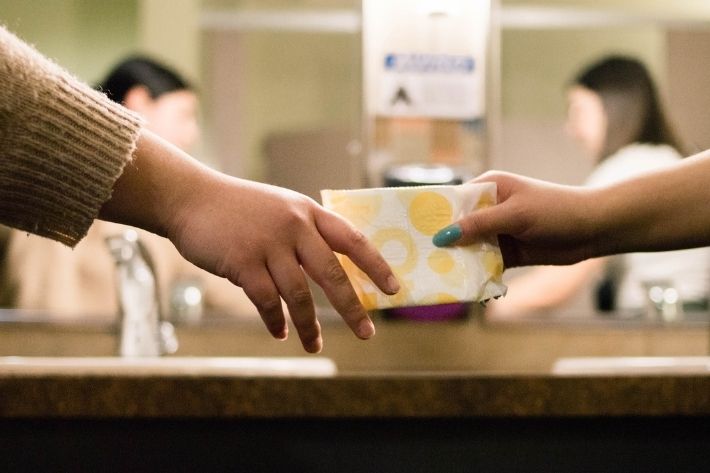Sexually transmitted infections, commonly known as STIs, can be transmitted through vaginal, anal, oral sex and even through close skin-to-skin sexual contact. Whether you are in a monogamous relationship or having sex with multiple partners, there is a chance you may unknowingly have an STI. Although some STIs may show symptoms like flu, unusual discharge or burning when peeing, many STIs often show few or even no symptoms at all.
To know your status, getting tested is always a good idea!
It is perfectly normal to feel worried about getting tested for STIs, and if the result is positive. However, it is important to know that most STIs are curable or treatable. The earlier you know your status, the quicker you can get treatment and care.
In part two of our blog series on STIs, we will talk about self-testing for HPV, gonorrhoea, chlamydia, and trichomoniasis.
STIs and risk of cancer
The human papillomavirus (HPV) and the hepatitis B virus are sexually transmitted infections (STIs) that can be transmitted through unprotected anal, vaginal and oral sex. If these infections are left untreated, they may cause different cancers. To avoid risk of cancer it is important to get vaccinated and attend regular cancer screenings.
Cervical cancer is the fourth most common cancer among women, but it is also one of the most preventable cancers. High-risk type of HPV is the primary cause of cervical cancer. Like many other STIs, most HPV infections show no symptoms.
HPV self-sampling
HPV testing is one of the cervical cancer screening options, which can detect early pre-cancerous lesions. Depending on your age, medical conditions and the country where you live, you may be required to attend cervical cancer screenings every few years, so it is important to check what screening programme is available. For example, if you are living with HIV, you should attend regular screenings. Contact your local healthcare provider for more information.
Unlike other cancer screenings, HPV samples can be collected by either a healthcare provider or yourself.
Gonorrhoea, chlamydia, and trichomoniasis
Gonorrhoea, chlamydia and trichomoniasis are other common STIs. Symptoms can include discharge from the genital organs, burning sensation when peeing, itching, swelling, and bleeding.
It is also possible not to experience any symptoms.
If you don’t have any symptoms, and still don’t know your status, why don’t you take a test to clear your doubts? Regular STI testing is a regular routine for many people who are sexually active. It's important to know if you have a STI before it causes any damage to the body including infertility.
Taking a test is very easy and you can choose to do it at a health facility with a trusted healthcare provider or you can do it at home. The choice is yours!
Self-care for HPV, gonorrhoea, chlamydia, and trichomoniasis
Self-care for HPV, gonorrhoea, chlamydia, and trichomoniasis is easy, confidential and empowering. Tests are widely available in healthcare facilities, pharmacies and online. Some tests may even be available for free.
Once you receive your self-testing pack, you will find easy-to-follow instructions and a sealed kit. It is important to take the time to read the instructions carefully before collecting your sample and only open the kit when you feel ready to take the test. If you have any doubts, you can watch a video that will guide you through the test. Remember you can always contact healthcare facilities and pharmacies if you need more detailed information.
Self-sampling kits for HPV, gonorrhoea, chlamydia and trichomoniasis are usually available in the form of a urine sample and vaginal swab. Some companies also provide rectal and throat swabs for these STIs.
Taking a vaginal swab may sound difficult, but if you have ever inserted a tampon, this will feel very familiar. It is important to relax so that you will be able to insert the swab smoothly. After you collect the sample successfully, follow the rest of the instructions.
If you are using STIs self-sampling kits, you will only need to collect a urine or vaginal sample to send to the laboratory where it will be tested (this may take a few days). You will usually receive your result by post, text, or another method you should have been made aware of.
If you are using STIs self-testing kits, you will need to add your urine or swab samples together with a few drops of agent (found in your kit) to the test cassette. In a few minutes you will be able to see the result!
When you receive the results, your test will be either positive or negative.
If your test is negative, that means you do not have any of the STIs you have tested for. However, it is important to practice safer sex using protection such as condoms and dental dams, and to test yourself regularly.
If your test is positive, get in touch with a trusted healthcare facility as soon as you can, and try not to worry. A healthcare provider will be able to confirm your STI status and provide the necessary care and treatment. Gonorrhoea, chlamydia, and trichomoniasis can be all cured by antibiotics.
If your HPV self-sampling result is positive, you should discuss this with your healthcare provider who will evaluate the lesion and advise you on treatment and care. A positive HPV-result doesn’t always mean you have cervical cancer, which is why early testing and treatment is extremely important.
More information
There is a vast range of information on STIs self-testing available online thanks to the growth of digital health technologies in recent years. For professional advice contact your local healthcare provider; you can visit an IPPF Member Association in your country where our teams will be happy to help.
Do you want to know about other STIs? Read about self-care options for HIV and syphilis in Part 1 of our series.
when











